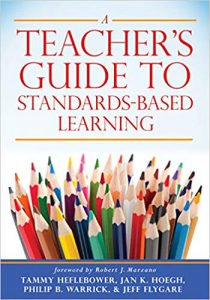

Using their decades of experience in schools, along with up-to-date research, the authors explain the theories and ideas behind standards-based learning—a method of connecting curriculum, instruction, assessment, and feedback in classrooms—and provide constructive examples for implementation.
“While standards-based learning is better for students, in fact, once teachers make it through the transition stage to full implementation, standards-based learning is better for teachers,” explain the authors in the book’s introduction. “It provides time to go deeper, clarity about the content, and evidence that they are reaching more students.”
Key topics covered include:
- Planning instruction with proficiency scales
- Instructing with proficiency scales
- Setting goals and tracking progress
- Administering quality classroom assessments and figuring grades
- Teaching exceptional students
- Communicating grades
Also included are answers to frequently asked questions, as well as a sample unit plan at the elementary school level.
Thomas M. Buckmiller, an associate professor at Drake University in Iowa, had high praise for the title, explaining, “A Teacher’s Guide to Standards-Based Learning… will serve teachers and instructional leaders well as they transition to instructional, feedback, and assessment strategies that support learners. This book is a practical and sequential companion for teachers and provides clear, working definitions and examples to assist the practitioner in this journey.”







